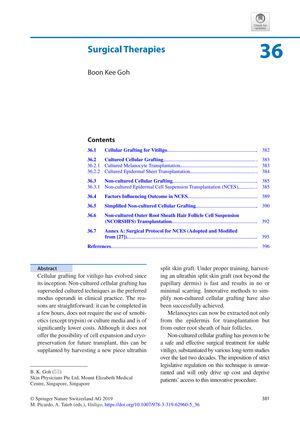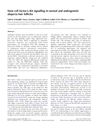Surgical Therapies for Stable Vitiligo: Non-Cultured Epidermal Cell Suspension Transplantation
January 2019
in “
Springer eBooks
”

TLDR Transplanting skin cells is a safe, effective, and affordable treatment for vitiligo.
The document from 2019 discusses surgical therapies for stable vitiligo, particularly focusing on non-cultured epidermal cell suspension (NCES) transplantation. This method, which involves transplanting epidermal cells from the patient's skin to vitiligo-affected areas, has been shown to be safe, effective, and cost-efficient over two decades of long-term studies. It allows for larger treatment areas compared to traditional grafting and has been improved by using hyaluronic acid to increase cell suspension viscosity. Studies cited include one by Van Geel et al. with 33 paired lesions in 28 patients, showing 77% of treated areas achieving at least 70% repigmentation at 12 months. Simplified techniques, such as the "6-well plate technique" and a four-compartment petri dish method, have also been developed, yielding high repigmentation rates. Additionally, the document mentions the ReCell® kit, which showed comparable results to conventional NCES. Non-cultured outer root sheath hair follicle cell suspension (NCORSHFS) transplantation is also discussed, with one study showing 9 out of 14 patients achieving over 75% repigmentation. However, NCES transplantation was more satisfactory to patients, with satisfaction rates of 95% for repigmentation and 98% for cosmetic appearance. The document calls for further studies to compare these simplified methods with conventional ones but does not provide the number of people involved in the satisfaction study.




